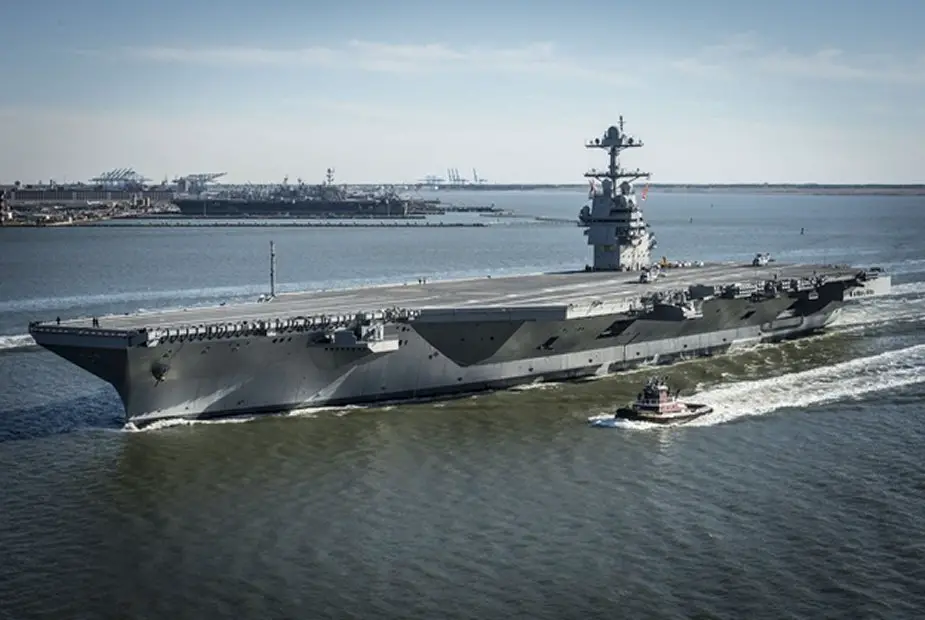Breaking news
Raytheon completed first dual-target test of Ford-class integrated combat system.
Raytheon Company and the U.S. Navy completed the final developmental test of the latest generation of the Ship Self Defense System, or SSDS, Integrated Combat System for the USS Gerald R. Ford (CVN 78).
 The USS Gerald R. Ford (CVN 78) Ford-class aircraft carrier of the U.S. Navy (Picture Source: U.S. Navy)
The USS Gerald R. Ford (CVN 78) Ford-class aircraft carrier of the U.S. Navy (Picture Source: U.S. Navy)
The test was conducted off the coast of California from the Navy's unmanned Self Defense Test Ship simulating a scenario CVN 78 may encounter once deployed.
During the raid scenario exercise, two anti-ship missile surrogate targets were located, classified, tracked and engaged using the SSDS Integrated Combat System adapted for CVN 78.
The Raytheon Ship Self-Defense System ICS includes a dual-band radar, a cooperative engagement capability (or CEC), a ship self-defence system, and an evolved SeaSparrow Missile and Rolling Airframe Missile.
The Dual Band Radar: This technology searched for, located and tracked the targets. DBR then provided uplink and radar illumination to the Evolved SeaSparrow Missile to support missile guidance.
The Cooperative Engagement Capability, or CEC: The capability validated and processed the Dual Band Radar data for SSDS. CEC is responsible for providing a single, integrated air picture by fusing data from multiple sensors to improve track accuracy.
The Ship Self Defence System: SSDS processed the CEC data, classified the targets, determined the appropriate engagement ranges, passed launch commands to the interceptor missiles, and scheduled Dual Band Radar support for the engagements.
The Evolved SeaSparrow Missile and Rolling Airframe Missile: Successfully engaged and defeated both targets using live and simulated interceptors. The Ship Self-Defense System ICS for CVN 78 has now successfully engaged three of three targets over the course of its first two test exercises.





























